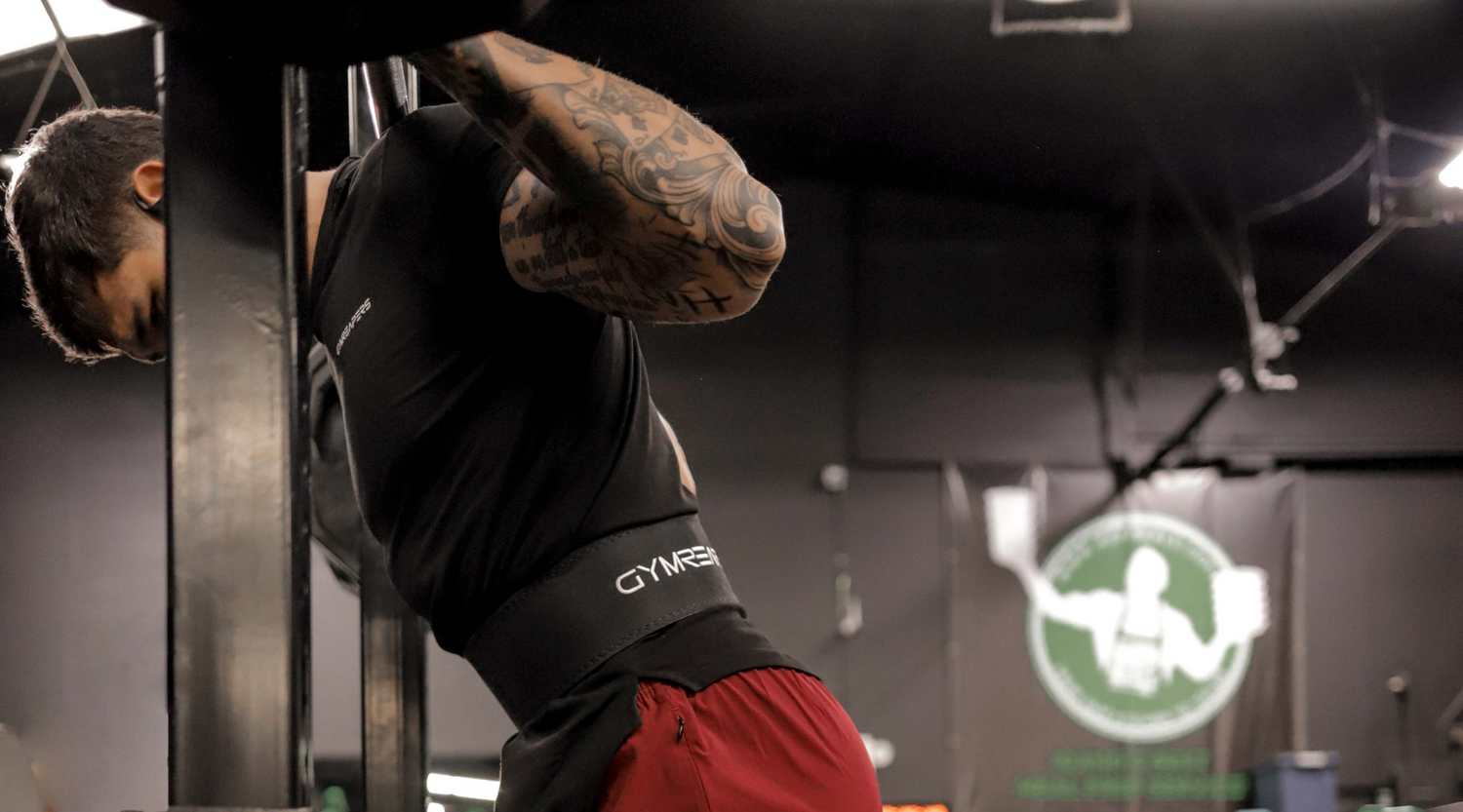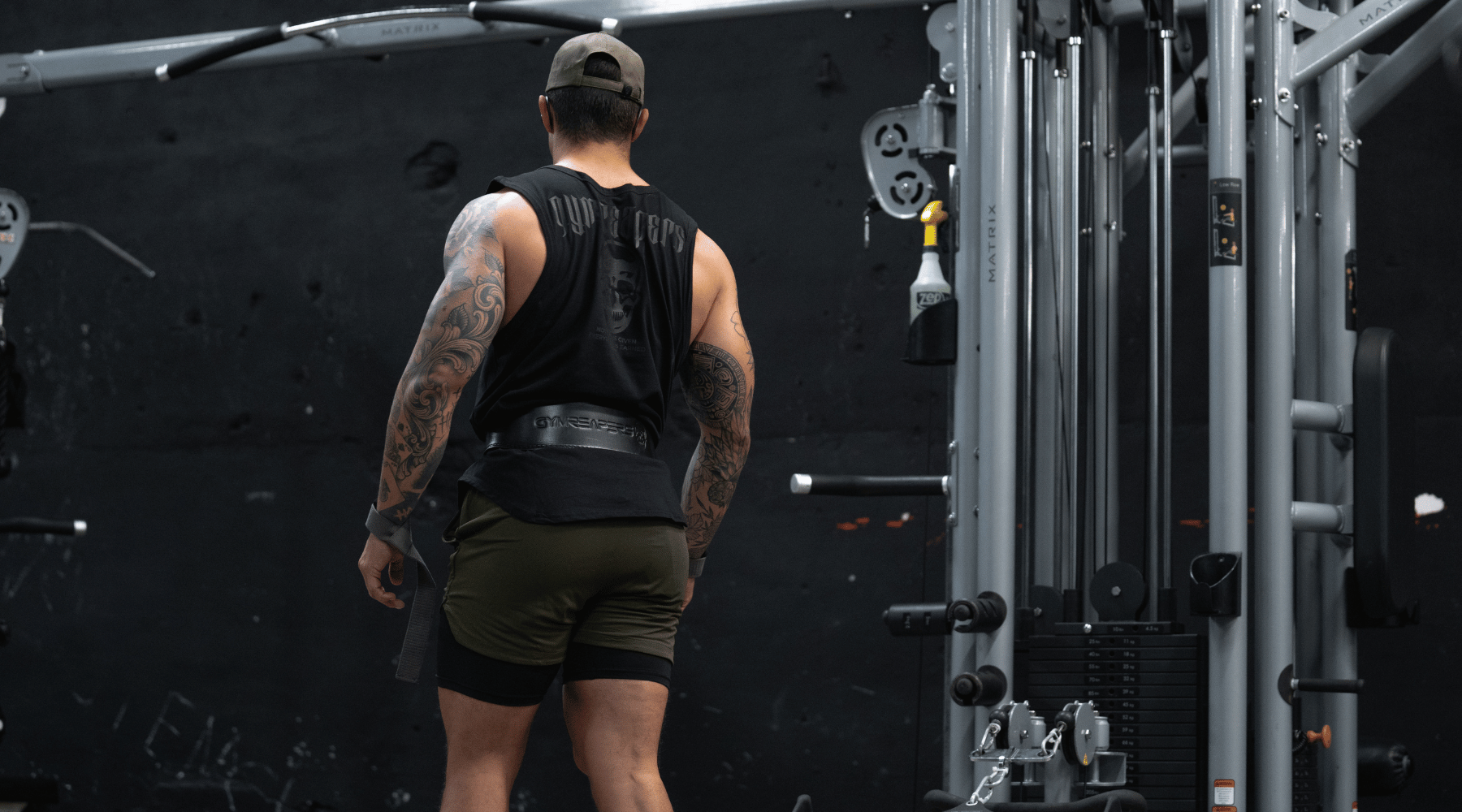As an experienced trainer, one question I get asked a lot when my clients are selecting or buying a lifting belt is the difference between the 3-inch and the 4-inch lifting belt and the ideal option for use in the gym.
The 3-inch lifting belt is ideal for lifters with short torsos (usually 2-2.5 inches) and some women who weigh less than 140 pounds. Almost all other types of lifters will use a 4-inch lifting belt, as it’s the default belt that most manufacturers make for maximizing both support and comfort.
Below I’ll discuss the use cases for both 3 inch and 4 inch lifting belts, and the main differences between them.
Key Takeaways
- 4-inch lifting belts provide superior back and core support. Hence, you can lift heavier weights compared with using a 3-inch belt.
- People with short torsos should consider buying a 3-inch lifting belt because it wouldn’t dig into your rib cage as much as a 4-inch belt would.
- There are some lifting belts that have a 4-inch width on the back that taper to 3-inches in the front. This style may be more beneficial than simply buying a 3-inch belt that is the same width all around.
Belt Width
What Is A 3-Inch Lifting Belt?

A 3-inch lifting belt has a 3-inch width (the distance from the top to bottom). Both the back and front of the belt have equal widths.
People with shorter torsos, bench press specialists, and some women who weigh less than 140 pounds may prefer using these belts while working out.
Usually, lifting belts with this width are less popular in the market because most people prefer wider belts.
However, there are a few brands that produce 3-inch lifting belts (only 3 that I could find). You can also order a customized belt option, but these services are usually out of budget for most people. .
What Is A 4-Inch Lifting Belt?

The 4-inch is a lifting belt that has a 4-inch width all around. It is the most popular
lifting belt since it’s standard across most lifting activities (bodybuilding, powerlifting, crossfit, Olympic weightlifting, etc).
If you are an athlete whose torso can accommodate a wider lifting belt (most can), or you’re purchasing a belt for the first time, then the 4-inch belt is the way to go. You’ll also want to consider a 4-inch lifting belt if your plan is to lift heavier weight.
While 4-inch belts are wider, they are designed in a way that are comfortable to use. So you don’t need to worry that ‘wider’ means less comfortable.
6 Differences Between 3 vs. 4 Inch Lifting Belt
Besides the width, both lifting belts have key differences that users should note. Here are six common ones.
1. Resale value
Generally, every brand in the market out there will price lifting belts depending on various factors such as the materials and the fastening mechanism used.
If you want a good lifting belt that’s durable, you have to be ready to spend around $100 (for a leather lifting belt). Any belt costing less than this will be low quality, and there’s a high chance you won’t use it for long.
However, we noticed when people are reselling their lifting belts that the resale value of a 4-inch lifting belt will be higher than that of a 3-inch belt. That’s simply because 4-inch belts are in higher demand.
2. Support
When asked which belt to choose when considering support, most people would definitely go for the 4-inch. These belts offer the user mid and low-back support when doing a wide range of workouts.
The 3-inch belt, on the other hand, only provides low back support and not to your mid back.
Hence, the reason why it’s mostly recommended to bench press specialists (those who compete in bench press competitions) since they only need to support their lower back when arching their back.
3. Competition Standards

Many competitive lifters (powerlifters and Olympic weightlifters in particular) will prefer a 4-inch belt. This is because most competitions allow athletes to wear these belts as the maximum width option.
People will only go for a 3-inch belt for competitive lifting if they have a short torso. It will be more comfortable for them since it won’t dig into their ribcage.
But the theory is that the wider the belt, the more support you’ll get. So for competitive lifters, this is the advantage of going for a 4-inch belt.
4. Popularity in the Market
The most common type of belt you’ll find in any store is the 4-inch. They are in high demand, and people prefer them because they can use them for a wide range of movements, unlike a 3-inch belt that may not perform well, for example, when used for heavy squats that require a lot of support.
5. Experience Levels
A 4-inch belt is good for both novice and advanced lifters, so if you buy one as a beginner it should grow with you as you get stronger in the gym.
The only real use case for a 3-inch belt, regardless if you are a beginner or advanced lifter, is if you have a short torso.
6. Closure mechanism
4-inch belts have a variety of closure styles, either lever, prong, or Velcro.
The only closure mechanisms you can find with a 3-inch belt is prong.
Pros & Cons: 3 Inch vs. 4 Inch

3 Inch Belt Pros
- They are budget-friendly – 3-inch belts are going to be cheaper than 4-inch belts.
- They are comfortable for people with a short torso – Most people who struggle to use a wider belt, such as a 4-inch belt because it digs into their ribcage or is uncomfortable, should use a 3-inch belt.
- Shorter people can use them for a wide range of workouts – If you have a shorter torso, which is between 2-2.5 inches, you can use this belt for a wide range of workouts.
3 Inch Belt Con
- They are not readily available in the market – Although most people appreciate them for being affordable, it’s difficult to find them because a few manufacturers produce them.
- They are not ideal for heavy lifting – if you have a large torso and you plan to start heavy lifting, we cannot recommend this belt. You may end up hurting yourself since your mid-back is not fully supported.
4 Inch Belt Pros
- They are popular – You won’t struggle to find a high-quality 4-inch lifting belt because numerous brands produce them.
- They offer superior support – Compared to 3-inch belts, you get full support of your back and core when lifting heavier weights.
- Larger people find them comfortable – If you have a larger torso, you might find them comfortable when doing various exercises and workouts.
- Wide range of styles available – 4-inch belts offer way more styles from the closure mechanisms to the materials.
- Ideal for recreational and competitive powerlifting and weightlifting – Most competitions approve these belts.
4 Inch Belt Cons
- They are pricey – If you want a high-quality 4-inch lifting belt, you may need to spend up $100 or more, although some 3-inch belts can cost close to this as well.
- Not ideal for people with short torsos or thin waists – Such lifters will not be comfortable using the belt.
Belt Recommendations
Best 3-inch lifting belt

We have a hard time recommending a 3-inch belt that is the same width all the way around the belt. There just isn’t many use cases for a belt like this, even though they exist.
As such, this Gymreapers 3-inch lifting belt is actually 4-inches in the back and then tapers to 3-inches in the front.
This is the best of both worlds. You get the low and mid-back support of a 4-inch belt, but if you have a shorter torso, it tapers to 3-inches in the front so that it doesn’t dig into your ribcage when you’re performing heavy squats or deadlifts.
The belt is 7mm thickness, leather material, and a double-prong closure mechanism.
Best 4-inch lifting belt

This is a 4-inch lever belt, which is ideal for those looking for the tightest, most secure fit.
Most powerlifters and those looking to get stronger in the gym use this belt.
If you are looking for a lifting belt that you can use for years, this lifting belt will serve that purpose.
Frequently Asked Questions
Which material is best for 4-inch lifting belts?
You’ll come across two types of materials in the market: Nylon and leather. Leather lifting belts offer more support than ones made from Nylon. Competitive lifters prefer these belts because they are suitable for heavier lifting.
On the other hand, nylon belts are more versatile than leather material since you can use them to perform various exercises but not lifting extremely heavy weights.
How long do 4-inch lifting belts take to break in?
Because most 4-inch belts are made of leather, they would require at least 4-6 weeks to complete the break-in process if you are training 2-3 times a week.
Should you upgrade to a 4-inch lift belt if you have a 3-inch belt?
If you’ve already purchased a 3-inch lifting belt because you have a shorter torso, then you should not upgrade to a 4-inch lifting belt because it will be too uncomfortable. However, if you purchased a 3-inch lifting belt by mistake, and your torso (distance between hips and rib case) is greater than 3-inches, then you should consider upgrading to a 4-inch belt.












Leave a comment
All comments are moderated before being published.
This site is protected by hCaptcha and the hCaptcha Privacy Policy and Terms of Service apply.